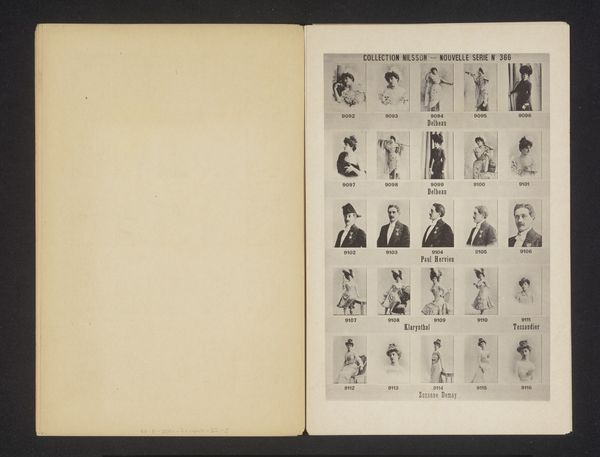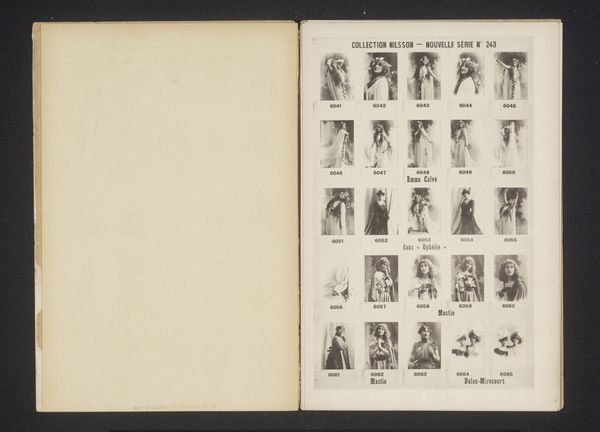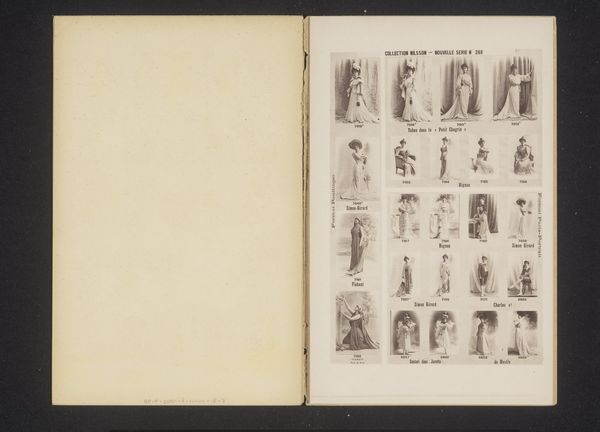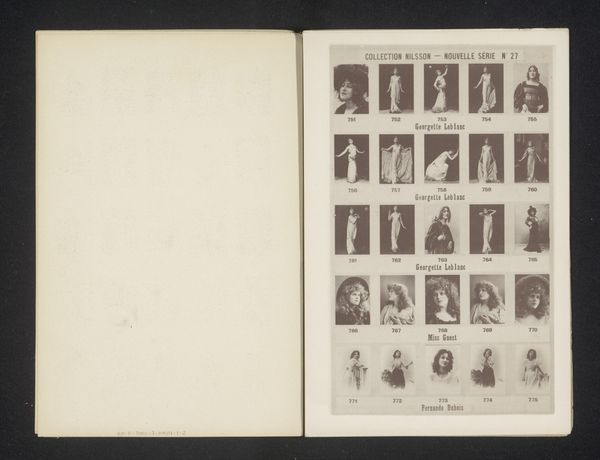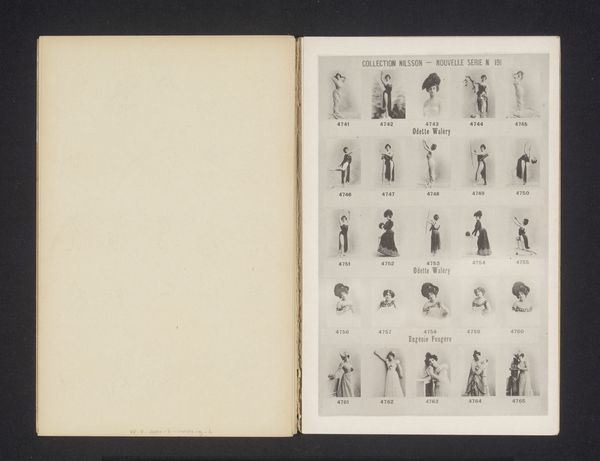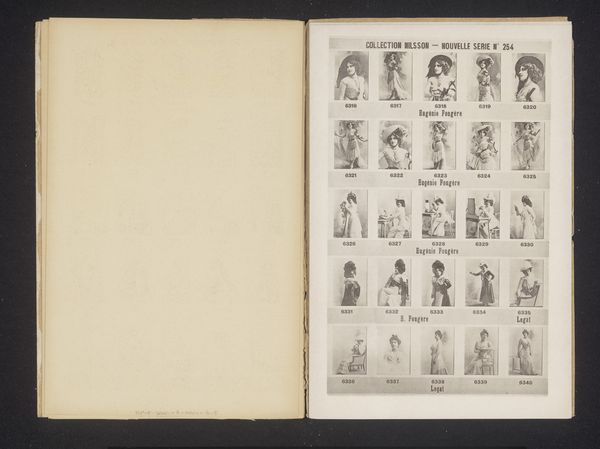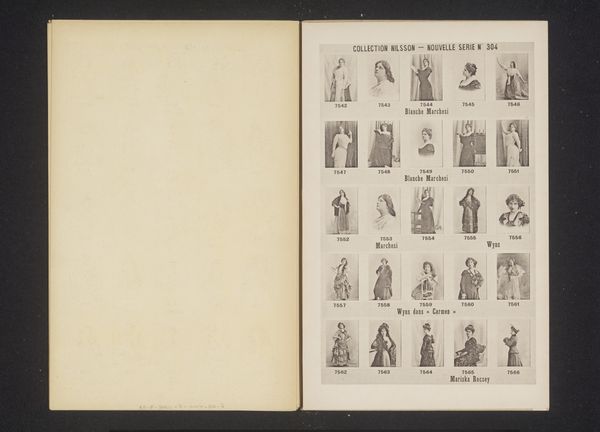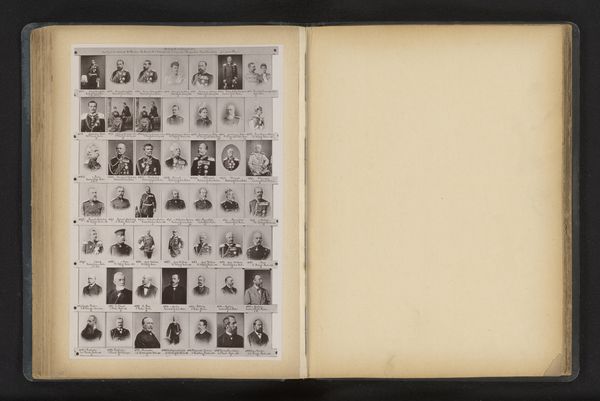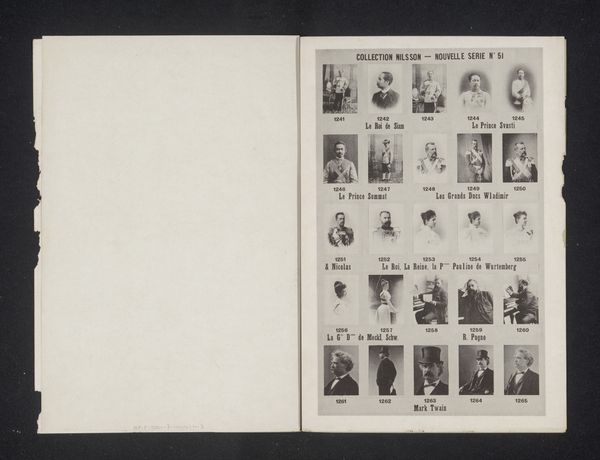
25 portretten van Juniori, Eglantine, J. Simon, Sorel en Valentine Petit before 1897
0:00
0:00
print, photography, albumen-print
#
portrait
# print
#
photography
#
genre-painting
#
albumen-print
Dimensions: height 235 mm, width 153 mm
Copyright: Rijks Museum: Open Domain
Editor: Here we have a photographic print titled "25 Portraits of Juniori, Eglantine, J. Simon, Sorel and Valentine Petit," dating from before 1897. The albumen print compilation strikes me with its sheer density of form, each contained image vying for attention within the larger frame. What compositional choices stand out to you? Curator: The deployment of a grid structure is, of course, primary. Note the rigorously geometric arrangement of these miniature portraits, all striving to occupy equal space and maintain structural integrity within the matrix. This format creates a fascinating tension between individual representation and the flattening effect of seriality. Editor: I see what you mean. Does the albumen printing process contribute to the artwork's formal qualities? Curator: Precisely. Albumen's unique tonal range grants a subtle glow, enhancing detail yet simultaneously unifying diverse subjects through shared light and shadow play. Further, the varying textures evidenced in clothing—velvets versus linens, for example—establish small scale formal contrasts. How do the poses affect your understanding? Editor: They are quite stiff and formal! Everyone is posed similarly, I now understand what you meant by a unifying effect and flattening. The postures are generally static. I wonder, do you consider the relationship between individual portrait and group dynamics relevant? Curator: Certainly. The interplay between individuality—visible in dress, adornment, and expression—and standardized presentation generates structural meaning. Are we to view these as discreet entities, or as component pieces of an overarching typology of that era? What conclusions can be drawn when the structural organization dominates the representational value? Editor: The structured view helps. I now see how the formal composition encourages analyzing photographic qualities like texture, tone and light more that simply seeing them as people. Curator: Exactly. Apprehending art demands acute formal engagement and careful visual evaluation above all else.
Comments
No comments
Be the first to comment and join the conversation on the ultimate creative platform.

